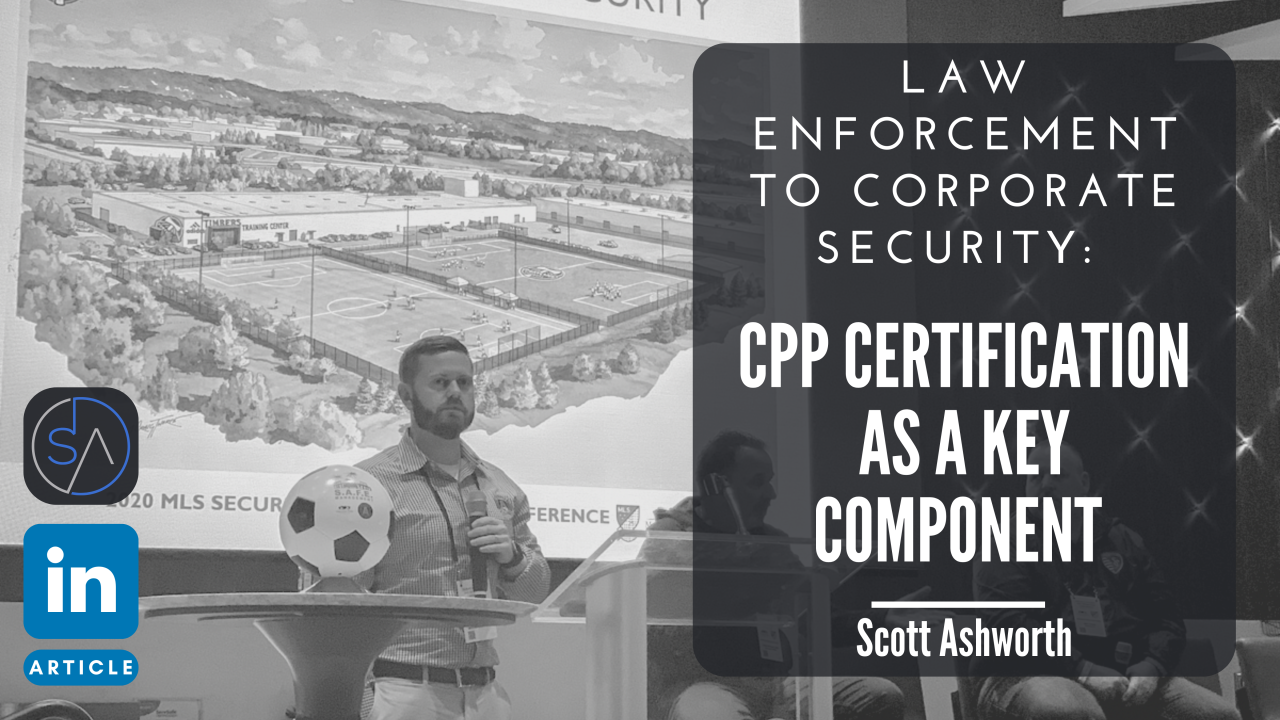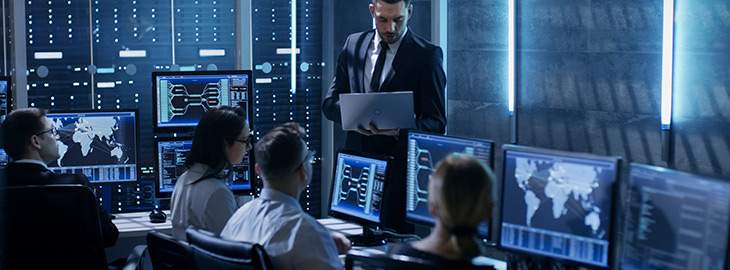Corporate Security Demystified: Strengthening Your Organization Defenses
Wiki Article
From Cybersecurity to Physical Procedures: Strengthening Business Protection in an Altering Globe
In today's quickly progressing electronic landscape, the relevance of business safety and security can not be overemphasized. As cyber hazards end up being prevalent and significantly sophisticated, organizations have to go beyond typical cybersecurity steps to protect their assets and procedures - corporate security. This is where the assimilation of physical protection measures ends up being essential. By incorporating the strengths of both cybersecurity and physical protection, companies can develop an extensive protection strategy that deals with the varied series of threats they deal with. In this discussion, we will check out the changing hazard landscape, the demand to incorporate cybersecurity and physical security, the implementation of multi-factor verification measures, the relevance of staff member understanding and training, and the adjustment of protection measures for remote workforces. By checking out these crucial areas, we will obtain valuable understandings right into just how companies can enhance their corporate safety and security in an ever-changing world.Understanding the Changing Hazard Landscape
The advancing nature of the contemporary globe demands a detailed understanding of the changing hazard landscape for effective company protection. In today's electronic and interconnected age, threats to corporate safety and security have actually ended up being much more intricate and sophisticated. As modern technology developments and companies come to be progressively dependent on digital facilities, the potential for cyberattacks, information breaches, and various other safety violations has actually dramatically increased. It is critical for companies to remain informed and adapt their protection gauges to attend to these evolving dangers.One key aspect of recognizing the changing threat landscape is recognizing the various types of threats that companies face. Additionally, physical hazards such as burglary, vandalism, and corporate espionage stay common issues for organizations.
Monitoring and evaluating the risk landscape is vital in order to recognize possible threats and susceptabilities. This entails remaining upgraded on the current cybersecurity patterns, examining risk knowledge reports, and carrying out regular threat evaluations. By recognizing the altering threat landscape, companies can proactively implement suitable protection steps to alleviate dangers and protect their assets, reputation, and stakeholders.
Integrating Cybersecurity and Physical Security
Incorporating cybersecurity and physical safety is essential for comprehensive corporate security in today's electronic and interconnected landscape. As companies progressively rely upon modern technology and interconnected systems, the limits in between physical and cyber risks are becoming obscured. To efficiently safeguard against these threats, a holistic strategy that combines both cybersecurity and physical protection actions is crucial.Cybersecurity concentrates on shielding digital assets, such as systems, networks, and data, from unapproved access, disruption, and burglary. Physical security, on the other hand, incorporates steps to secure physical possessions, people, and centers from susceptabilities and threats. By integrating these 2 domains, organizations can attend to susceptabilities and risks from both electronic and physical angles, thereby enhancing their total safety and security pose.
The assimilation of these 2 disciplines permits an extra comprehensive understanding of safety and security threats and enables a unified reaction to events. For instance, physical gain access to controls can be boosted by incorporating them with cybersecurity methods, such as two-factor verification or biometric recognition. Similarly, cybersecurity steps can be matched by physical protection actions, such as surveillance cameras, alarms, and safe and secure access factors.

Carrying Out Multi-Factor Authentication Measures
As companies increasingly prioritize detailed safety and security procedures, one reliable approach is the execution of multi-factor verification actions. Multi-factor verification (MFA) is a safety and security approach that requires individuals to supply numerous forms of recognition to access a system or application. This method adds an additional layer of defense by combining something the user knows, such as a password, with something they have, like a protection or a fingerprint token.By executing MFA, organizations can substantially boost their safety and security pose - corporate security. Typical password-based verification has its restrictions, as passwords can be conveniently compromised or failed to remember. MFA minimizes these dangers by including an added authentication factor, making it a lot more difficult for unauthorized individuals to gain accessibility to delicate details
There are numerous kinds of multi-factor verification techniques readily available, consisting of biometric verification, SMS-based verification codes, and hardware symbols. Organizations require to examine their certain demands and choose the most appropriate MFA solution for their demands.
Nonetheless, the application of MFA ought to be meticulously intended and executed. It is important to strike a balance in between safety and functionality to avoid user frustration and resistance. Organizations needs to likewise think about possible compatibility problems and offer adequate training and support to ensure a smooth transition.
Enhancing Staff Member Recognition and Training
To strengthen company security, organizations need to focus on enhancing worker recognition and training. Many safety and security breaches take place due to human error or absence of recognition.find Effective worker understanding and training programs must cover a wide variety of subjects, consisting of information defense, phishing assaults, social design, password health, and physical security measures. These programs should be tailored to the details demands and duties of various employee functions within the company. Routine training workshops, simulations, and sessions can assist staff members develop the essential abilities and expertise to respond and identify to safety and security threats properly.
Additionally, companies must encourage a culture of safety awareness and give continuous updates and pointers to maintain staff members informed concerning the current risks and reduction strategies. This can be done with inner communication channels, such as e-newsletters, intranet portals, and e-mail campaigns. By promoting a security-conscious workforce, organizations can significantly lower the possibility of protection cases and shield their important properties from unauthorized gain access to or compromise.

Adapting Safety And Security Actions for Remote Labor Force
Adapting corporate safety actions to accommodate a remote workforce is crucial in ensuring the security of sensitive info and assets (corporate security). With the enhancing fad of remote work, organizations should carry out proper safety measures to mitigate the risks related to this new way of workingOne vital facet of adjusting protection actions for remote job is establishing protected communication channels. Encrypted messaging systems and virtual exclusive networks (VPNs) can aid shield delicate info and stop unapproved gain access to. Furthermore, companies ought to enforce using strong passwords and multi-factor verification to boost the safety and security of remote gain access to.
Another important factor to consider is the execution of protected remote accessibility services. This includes providing employees with safe and secure access to company resources and information via virtual desktop infrastructure (VDI), remote desktop why not look here protocols (RDP), or cloud-based options. These technologies make certain that delicate information continues to be protected while enabling staff members to do their roles efficiently.

Finally, thorough safety and security awareness training is vital for remote staff members. Educating sessions need to cover best methods for safely accessing and managing have a peek at this website sensitive information, recognizing and reporting phishing efforts, and keeping the general cybersecurity health.
Conclusion
In verdict, as the hazard landscape proceeds to develop, it is essential for organizations to reinforce their security determines both in the cyber and physical domain names. Integrating cybersecurity and physical security, applying multi-factor authentication steps, and improving staff member recognition and training are essential steps in the direction of accomplishing robust company safety and security.In this conversation, we will certainly explore the transforming risk landscape, the demand to integrate cybersecurity and physical security, the application of multi-factor authentication procedures, the significance of staff member awareness and training, and the adjustment of security procedures for remote workforces. Cybersecurity procedures can be enhanced by physical security procedures, such as surveillance cams, alarms, and safe accessibility factors.
As organizations progressively focus on comprehensive safety and security measures, one efficient strategy is the implementation of multi-factor authentication actions.In verdict, as the risk landscape proceeds to advance, it is important for companies to reinforce their safety and security determines both in the cyber and physical domain names. Incorporating cybersecurity and physical security, applying multi-factor verification steps, and improving staff member understanding and training are important steps towards accomplishing durable company safety.
Report this wiki page